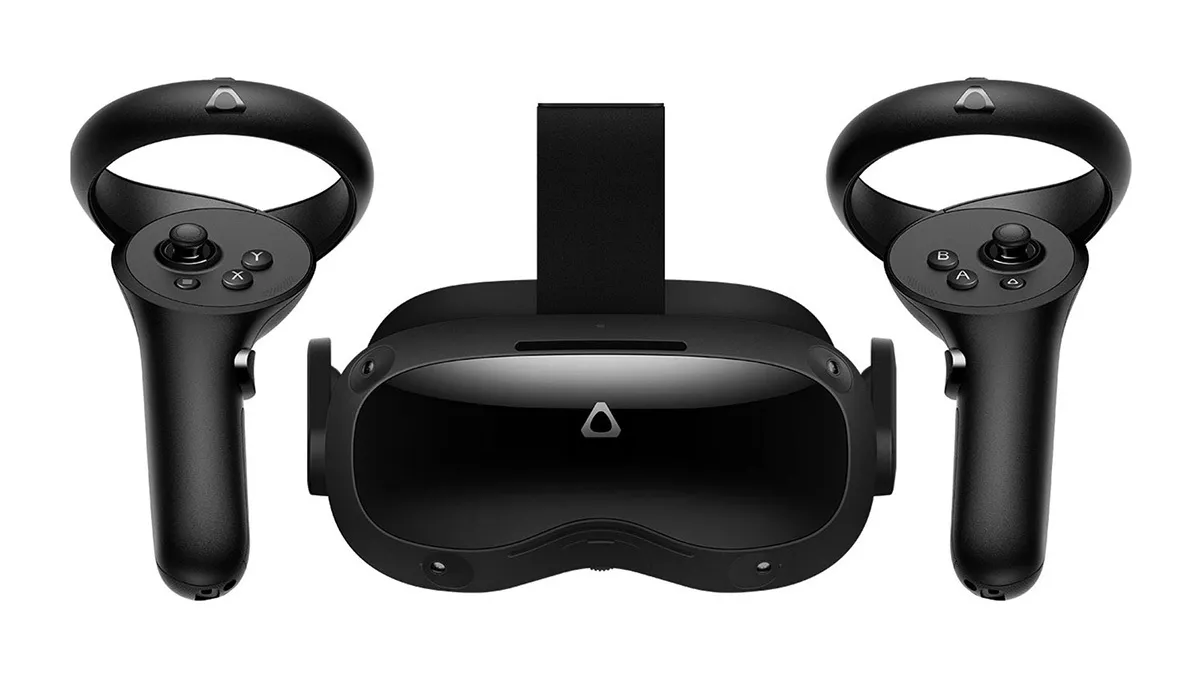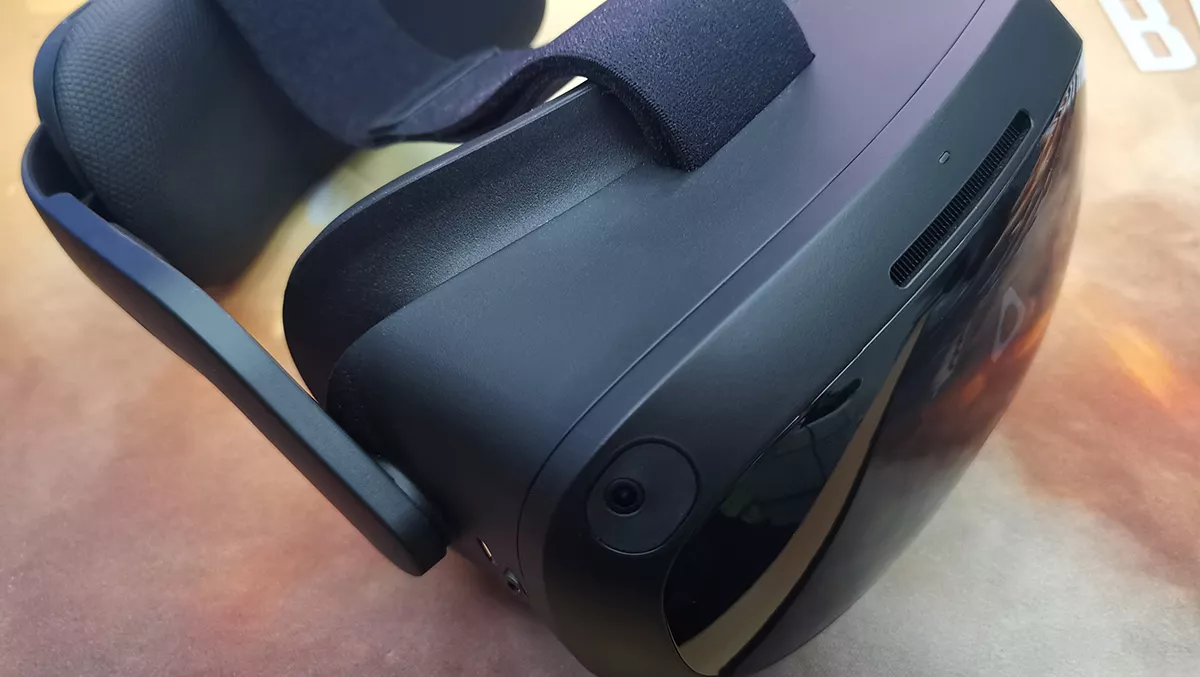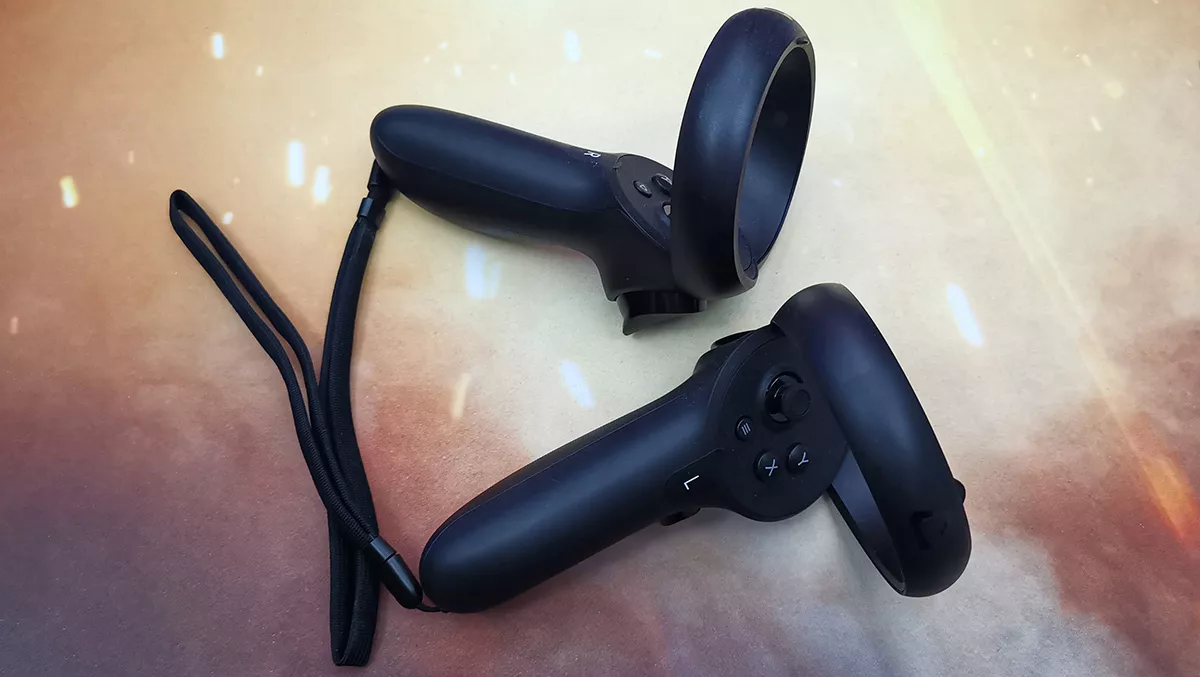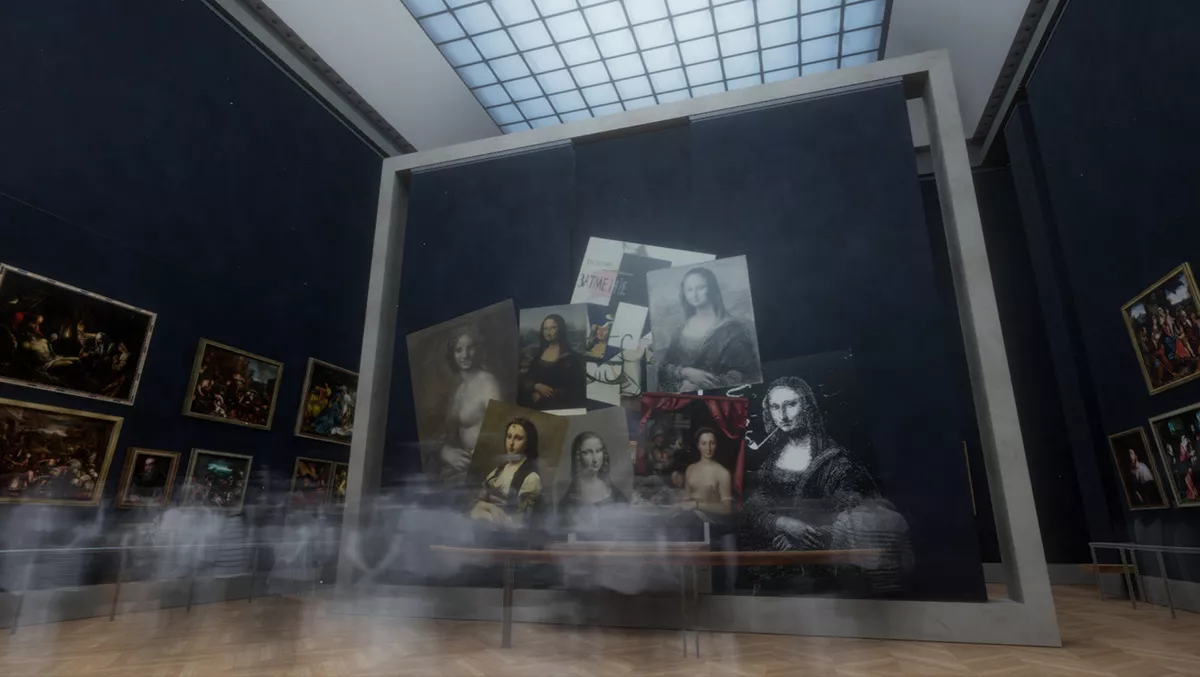
Hands-on review: HTC Vive Focus 3 VR Headset
HTC's Vive Focus 3 is a standalone VR solution aimed squarely at the business/corporate market. It joins the consumer-orientated Vive Cosmos and prosumer/industry VR Vive Pro 2 in completing HTC's range of VR solutions for all types of users.
The Focus 3 is a beautiful-looking device. Whilst the design is constrained by the necessities of today's VR headsets, it does not look as bulky or industrial as its contemporaries. Its sleek lines are more in keeping with a corporate environment, as a device that unfamiliar users won't feel self-conscious in wearing.
As an all-in-one headset, the wireless Focus 3 does not need to be connected to a computer. The inside-out tracking means that no external cameras/base stations or complex associated infrastructure is needed for it to work. You just put on the headset, turn it on, and you are good to go.

I did have some issues with the Vive Cosmos and the quality of that device's inside-out tracking. The Focus 3, impressively, tracks almost as well as the Vive Pro 2- a headset that uses external IR base stations.
The device's piano-black front hides cameras that are used to display the real world, reducing the somewhat claustrophobic feeling that VR gives some people, especially first-timers. The easy-to-fit head strap is similar in design to all the Vive headsets since the Vive Pro and is easy to put on.
The first thing I noticed was just how light the Focus 3 is when worn. It's also comfortable to wear, even better than the new top-of-the-range-Vive Pro 2. The battery pack that sits behind your head better balances the headset compared to the Pro 2, which I find does push down on your cheeks a bit.
It's also very easy to find the "sweet spot" where the view is clearest without having to mess about adjusting the headset's position. This is exactly what you want in a VR device for corporate users that may be unfamiliar with, or even reluctant to try, VR.
The Focus 3 features identical optics and the same 5K display as the Vive Pro 2 but running at a max of 90Hz and not 120Hz. The headset is powered by a Qualcomm Snapdragon XR2, the same as the Oculus Quest 2. This means that the VR experiences are somewhat restricted, but the Snapdragon is more than capable of handling the sort of VR applications required in most corporate environments. If necessary, the Focus 3 can be connected to a PC via a USB cable for more graphically intensive applications.
I was quite jealous of the Focus 3's controllers. The Vive Pro 2 still uses the same function over form wands supplied with the original Vive. The Focus 3 controllers are better moulded to your hands and feel more like game controllers with a little joystick, buttons, and a trigger. They look and work similarly to the Vive Cosmos controllers and those that come with Windows Mixed Reality headsets. I found them very comfortable and easy to use.

The Focus 3, unlike the other products in the Vive range, is ring-fenced, only offering apps aimed at corporate users. As a result, it feels more like a simplified VR kiosk than the content overload you get using a Vive Pro/Pro 2 with Viveport or SteamVR. The device is designed to be simply placed on the user's head, with an easy-to-understand dashboard that allows quick access to applications.
A couple of entertainment/edutainment apps were installed on the review machine but only to demonstrate the device's capabilities. I perceive that most Focus 3 customers would be running bespoke applications for their specific needs.
Being more used to a Vive Pro 2 running on a high-spec PC, I was still impressed with the standalone Focus 3's performance powered by the internal Snapdragon CPU. The installed Mona Lisa app took me on a unique journey into the history of the famous painting, starting in the Louve and heading out into the mind of Da Vinci. I've viewed the same app on a Vive 2 Pro, and the experience with Focus 3 was just as good.

A few other titles were included to show off the power of this pretty impressive VR device. Those missing out on their boxing gym workouts can get an identical experience with Rhythm Boxing without leaving the office. Players can thump the trainer's pads, ducking and striking just as they would with a real trainer. I can see a title like this being great for a bit of lunchtime stress relief.
Nature Treks VR is a series of detailed environments for casual exploration. The sense of immersion creates a relaxing outdoor experience. The scenes range from tropical beaches to an undersea diving experience. Watching elephants wandering the savanna at sunset was particularly breathtaking. Remind VR is a mindfulness application with a selection of meditation experts and different settings.
These casual experiences work flawlessly with the wireless Focus 3, potentially allowing users to turn their entire office into a virtual environment. A whole area can easily be set up with a visible boundary to avoid walking into walls, desks, etc. The above are all just distractions that highlight casual uses for the system.
An interesting soft skills training application was also installed, which is perhaps closer to the intended corporate use for the Focus 3. Bodyswaps is an HR tool that places the user in a meeting environment where they observe and identify poor behaviour.
The VR experience then puts the user in the victim's place so that they can experience the behaviours first-hand. It's a clever tool that uses immersion to trigger a level of empathy that you can not feel outside of a role-play training environment. The application highlights the Focus 3 as an impressive remote training tool.
Each Vive Focus 3 comes with a six-month subscription to HTC's communication, presentation, and conference platform, Vive Sync. 18 months ago, I met up with Thomas Dexmier, HTC Vive's ANZ Country Manager, in a beta version of Vive Sync, the Vive Sync VR meeting space. Now out of beta, once again, I met up with Thomas in Vive Sync.
In this age of remote working, the release of Vive Sync couldn't be timelier. Thomas had chosen an island convention resort theme for the demonstration. In moments of signing into the application, having previously created an avatar using the Vive Sync mobile app, I was present in the VR environment.
We met outside on the decking in the reception area, the sun shining high in the sky. Thomas explained how guests to the environment could feel as if they'd virtually disembarked after arriving at the facility just as they would in real life. The Vive Sync provided Thomas with an inspiring million-dollar location to showcase this fascinating application. The vast open conference suite had huge windows with a beautiful view of the ocean and giant screens. It was not hard to imagine how a very professional business conference could be hosted in this fabulous VR space.
Vive Sync doesn't just host large presentations. Thomas pulled up a virtual seat outside the conference building and offered me that same creating a breakout space that allows private conversations within the larger environment for doing one-to-one business. The application's ability to host meetings, presentations, and even import 3D models for product tours makes it one of the most versatile applications of VR that I've ever experienced.
The Vive Focus 3 lets users partake in virtual training sessions, relax in a bit of R-R, join colleagues for remote meetings and attend conferences just by putting on the headset. The high-resolution display takes away the pixelated "screen-door effect" that plagued earlier Vive headsets. The powerful mobile processor and "inside-out" tracking untethers the VR experience and makes the Focus 3 much easier to set up and use. What it may lack by not being partnered with a high-end PC, it makes up for in versatility. Of course, if more processing power is required, the device can still be connected to a PC, but I think that is not really the intent here. This is a device for business applications, presentations as well as interactive exhibits in museums and the like.
A consumer version of the headset would be nice but, competition is fierce and dominated by the likes of Facebook's lower-spec, heavily subsidised (and thus a lot cheaper) Oculus VR headsets.
The Focus 3 is certainly a very capable VR headset that's easy to set up and comfortable to wear. In focusing on the business market with the Vive Focus 3, where competition is not quite as fierce, HTC continues to empower the corporate uptake of VR as a communication, presentation, and training platform.


